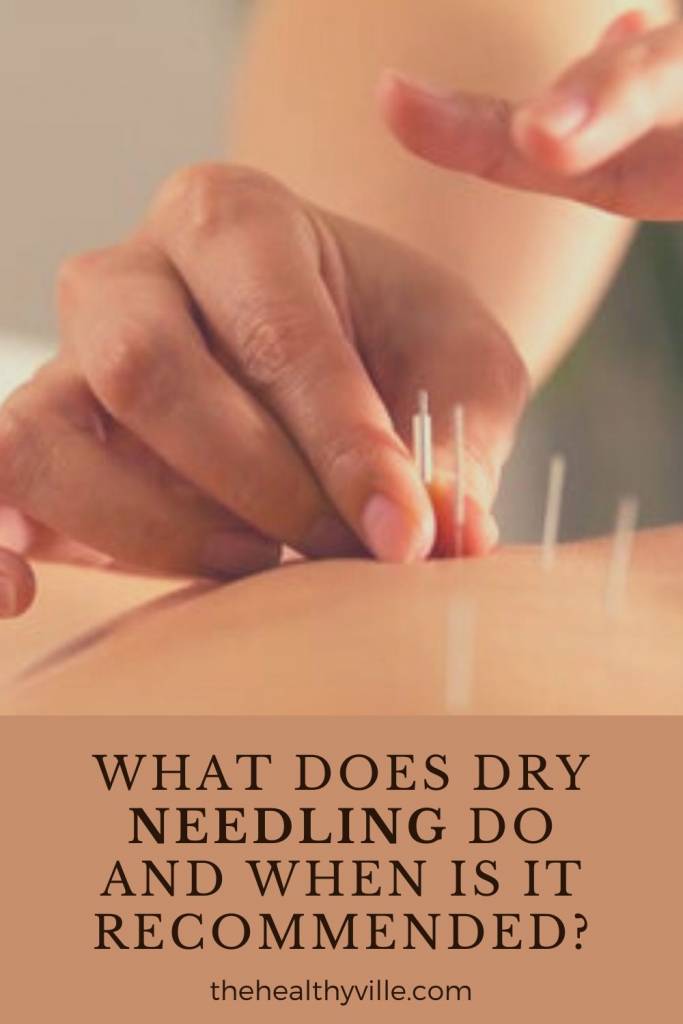What does dry needling do for the pain? When do doctors recommend it? Does it really help out just like people say? Discover all the answers!
Due to the increase in muscle problems that the population is currently suffering, numerous investigations agree on the importance of studying new ways to improve our health in this regard, one of them is the application of dry needling.
Within physical therapy, there are many therapies to treat ailments in our body. Throughout history, new and innovative techniques have appeared, such as in this case dry needling.
Dry needling, also known as ‘dry needling‘, is an evidence-based technique to improve muscle pain. In this space you will learn more about this new therapy, in addition to knowing its uses as a treatment for many muscle problems.
To understand what a dry puncture consists of and how it works, before continuing we must clarify two concepts: trigger point and myofascial pain.
What is a trigger point?
They are hyperirritable spots within a taut band of a certain muscle. This taut band is a group of muscle fibers that present abnormal tension, forming a band of high consistency. It is what we commonly call contracture.
This taut band is painful and its trigger point is a nodule that, on palpation, generates a very sharp pain that causes the person to withdraw. In addition, this pain radiates to other areas that do not include the trigger point; this is what is called referred or radiated pain. It can be accompanied by motor dysfunction and phenomena such as dizziness and nausea.
Trigger points of a muscle often radiate to certain areas that give physiotherapists a clue to where the problem is at. For example, headaches can come from a trigger point located in muscles such as the upper trapezius, the scapula elevator, or the sternocleidomastoid.
We see, therefore, that pain may have nothing to do with the area where it originates. Trigger points can be active or latent. An active trigger point means that it radiates pain to other areas, while if it is latent, it means that it does not radiate pain.
Trigger points become active by acute or chronic muscle overloads, direct trauma, and cooling. The most frequent activation factor is usually chronic overload due to postural problems.
What is myofascial pain?
Myofascial pain or SMF is a regional muscular process that can be acute or chronic. It is disabling and very frequent in the population, but it is usually unknown. It is not accompanied by alterations in imaging or analytical tests, therefore, it is underdiagnosed and under-treated.
SMF is a series of symptoms due to a trigger point:
- Sensory symptoms: there is an alteration in the sensation of touch. For example, if we are hit by something that normally does not hurt, having SMF will feel more pain. In addition, the referred pain explained above will appear.
- Motor symptoms: decreased strength, difficulty moving the affected muscle, etc.
- Autonomic symptoms: rhinitis, tearing, salivation, changes in temperature, sweating, piloerection (it makes your skin stand on end), dizziness, nausea and redness on the skin.
We could say that myofascial pain has three components:
- A palpable taut band in the affected striated muscle or contracture.
- A trigger point.
- A characteristic pattern of referred pain: That trigger point radiates pain to a characteristic area.
What is it and what does dry needling do?
Dry puncture is a physiotherapeutic technique that is mainly for the Myofascial Pain or SMF. Once we find the trigger point that causes myofascial pain, we must deactivate it with the help of a needle. This needle is similar to acupuncture needles but longer to reach the muscle.
The whole process needs cleaning of the area and that the physiotherapist uses gloves, disinfectant and gauze, since the dry point is a semi-invasive technique because it goes through the patient’s skin. Also, the needles come in unit packs and are not reusable.
The needle is inserted into the trigger point without anesthetic and is moved from the inside to the outside until a local spasm is achieved, that is, an involuntary contraction of the muscle. Doctors do it without actually removing the needle from the skin.
The puncture of the muscle stimulates the muscular receptor producing relaxation after the spasm and an increase in elasticity and decrease in pain in the area.
Is dry needling the same as acupuncture?
Dry puncture is a scientific technique in which doctors puncture the muscle to control myofascial pain. It lasts between 2 and 5 minutes, can be painful and is only performed by trained physiotherapists.
Instead, acupuncture is based on traditional Chinese medicine and the energy points are punctured superficially, without coming into contact with the muscle. The duration is about 20 minutes, it is not painful, it treats many illnesses and it can be done by any therapist.
Dry puncture risks
Although the risks of a dry puncture are minimal, there may be. However, they are mostly avoidable if a physical therapist with experience takes proper percaution:
- The needle goes through the skin and into the muscle; between these there may be small blood vessels. The most common risk of a dry puncture is to puncture a glass and cause a small bruise, which lasts about a day. This risk is more common in anticoagulated patients, who have more liquid blood.
- Another thing that can be pricked on the way to the muscle is a nerve branch. This can cause a tingling that will stop shortly.
- Another less frequent risk is that dizziness may occur during the procedure, which is technically the vaso-vagal response.
- There are few cases, but if the physical therapist does not have a good experience in dry punctures of the chest muscles, it can lead to pneumothorax.
- Muscle swelling or myoedema.
- Post-puncture dermatitis: skin reaction in the puncture area.
- Risk of infection if the physiotherapist uses no adequate cleaning measures to the area, no sterile gloves or needles.
On the other hand, after the dry puncture we can stay with a sensation similar to when they give you a very intense massage with slight stiffness. These sensations subside after 1 or 2 days.
Contraindications of dry needling
Most of the contraindications are relative. Among them, we can find:
- Unsurpassed fear of needles.
- Clotting problems and anticoagulant treatment: risk of bleeding.
- People with a weak immune system: risk of infections.
- Lymphadenectomized people: risk of lymphedema. This means that the part where the dry puncture is made can be filled with fluid that cannot be filtered because the lymph nodes in the area have been removed.
- Hypothyroidism: risk of myoedema or muscle inflammation.
Is dry needling effective?
According to several study reviews, dry needling is effective for:
- Reduce subjective and objective pain both locally and in the area of referred pain and pain from trigger point pressure.
- It also shows improvement in joint mobility related to the muscle that houses the trigger point.
- There is insufficient evidence, but there is evidence that dry needling may improve depression in patients with SMF.
In addition, the effectiveness of the dry puncture can depend on other factors of the patients, such as pain that lasts a while, lack of sleep or repetitive muscle work.
Don’t forget to SHARE what does dry needling do with your friends and family on your social networks!

